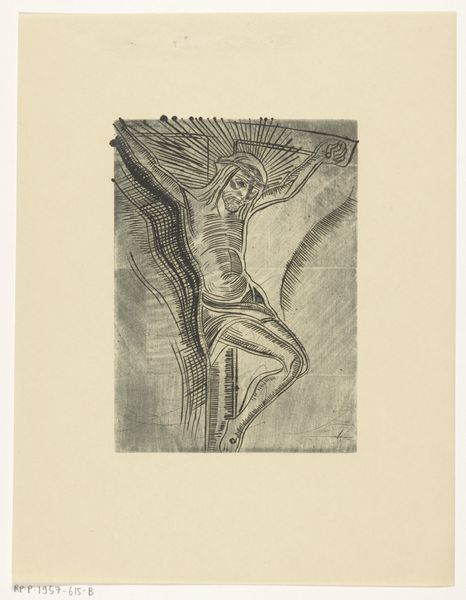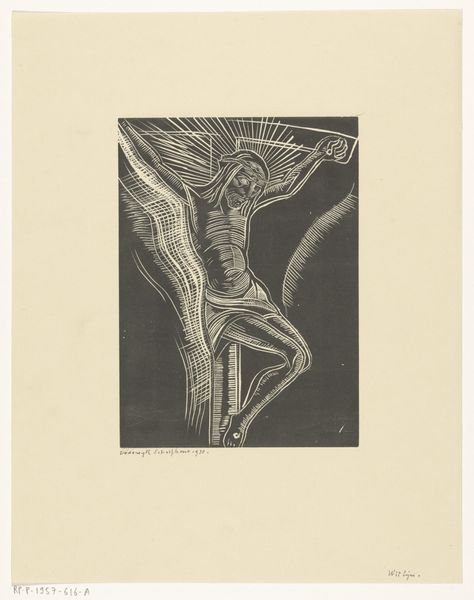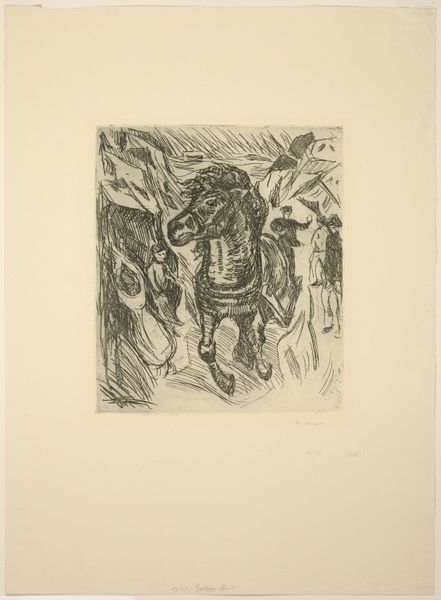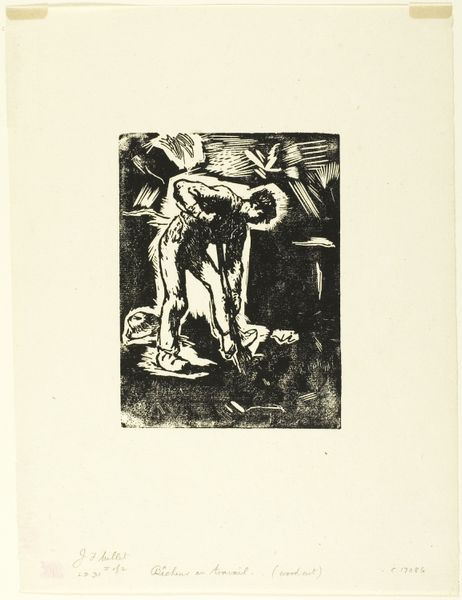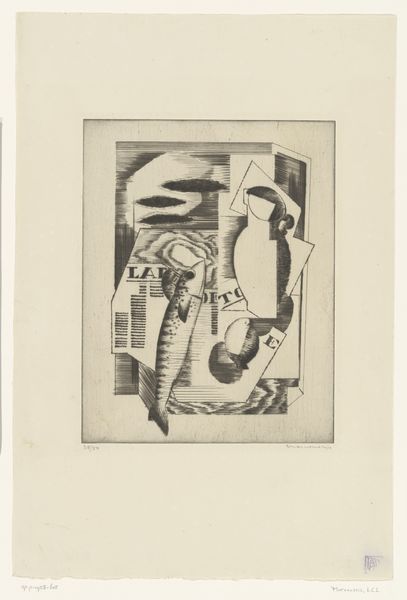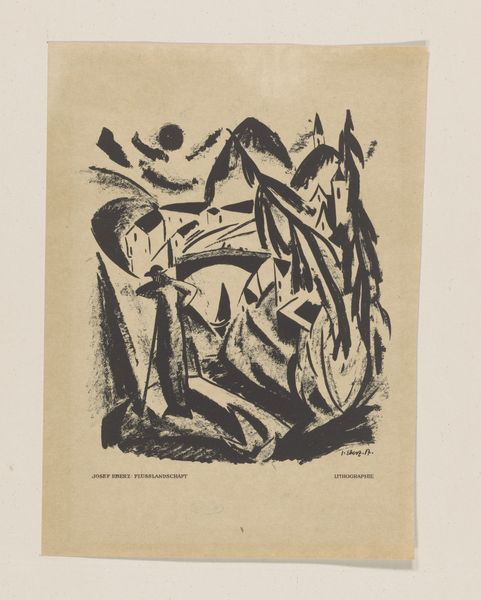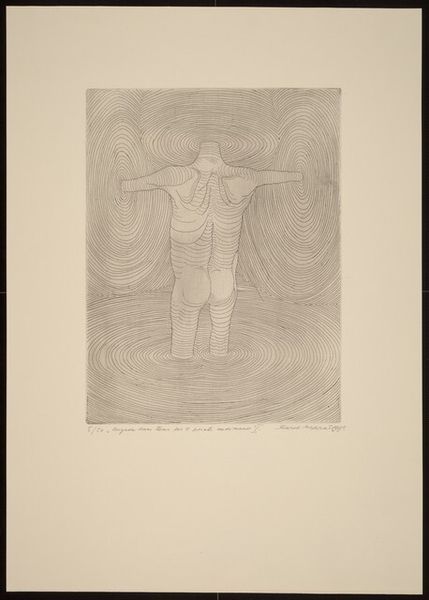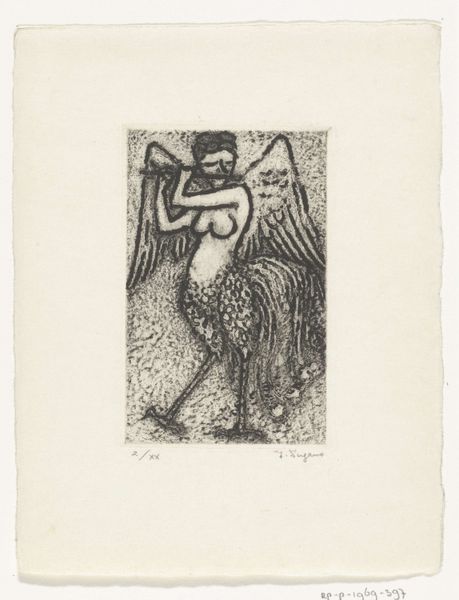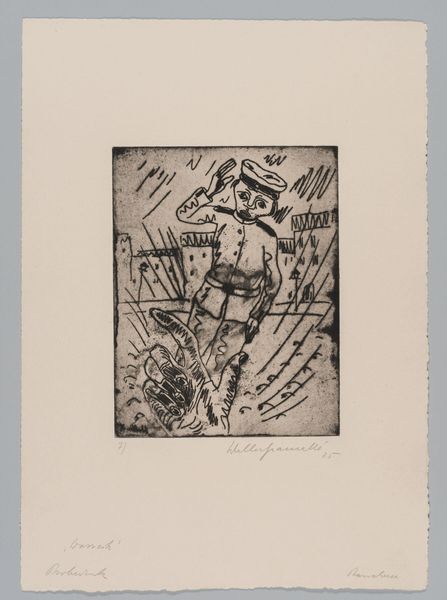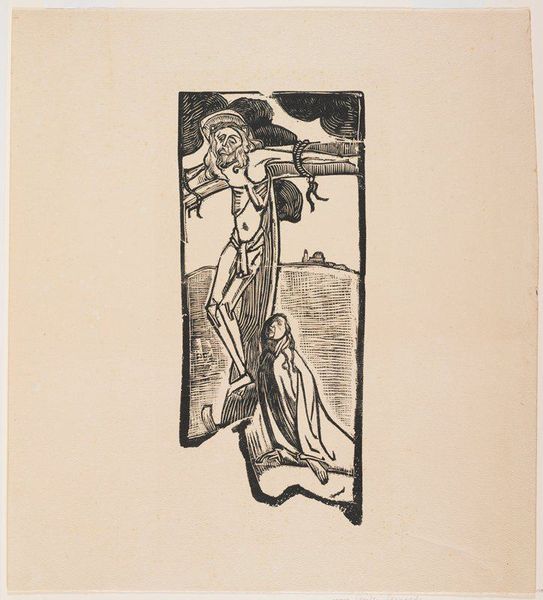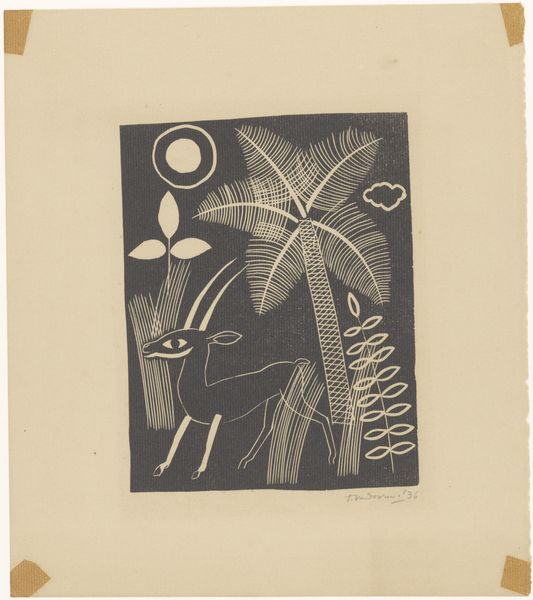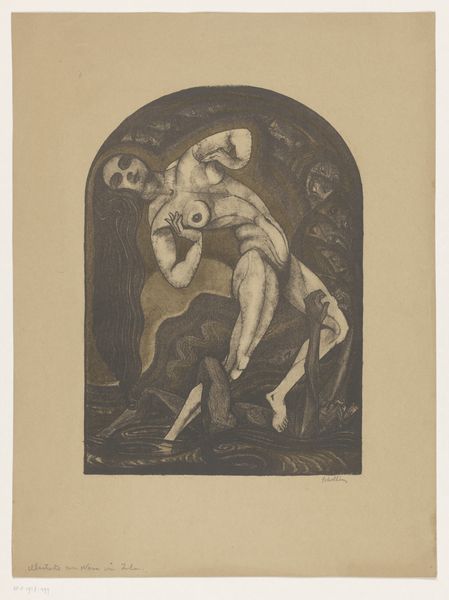
print, engraving
# print
#
figuration
#
linocut print
#
engraving
Dimensions: height 292 mm, width 245 mm
Copyright: Rijks Museum: Open Domain
Curator: This is Lodewijk Schelfhout’s 1935 print, "Christus aan het kruis," a linocut engraving currently held at the Rijksmuseum. Editor: There's something so raw and striking about this print. The heavy lines and stark contrast give it a really somber feel. How do you interpret this work, considering its historical context? Curator: Well, the 1930s were a period of immense social and political upheaval. Seeing Christ depicted with such stark lines, almost brutal, invites us to consider themes of suffering, sacrifice, and even resistance in the face of oppressive forces. How might the economic depression and rise of fascism influence this artist? Editor: That's fascinating. I hadn’t thought about it in terms of resistance. Is the medium itself—a linocut, which allows for strong contrasts—a conscious choice reflecting those themes? Curator: Precisely. Linocut is quite effective in making bold, graphic statements. The artist could be drawing a parallel between Christ’s suffering and the everyday struggles of marginalized communities. This image resists the saccharine depictions of faith. Think of how women have been historically excluded from religious leadership or theological discourse. Could this Christ represent an alternative to patriarchal structures? Editor: So, it becomes a statement about the struggle for equality and justice during that era. Curator: Yes, but consider that Schelfhout was working in a predominantly Christian society. This choice in subject and treatment must also signify his personal and social awareness. Are we meant to only mourn or also question the systemic failures that perpetuate injustice? Editor: I see now. The print is not just a religious scene, but a potent symbol of human suffering and a challenge to power structures. It makes me think about similar struggles for liberation still happening today. Curator: Exactly. Art, even when seemingly historical or religious, can provide powerful commentary on contemporary issues, encouraging us to reflect on the world around us. Editor: I hadn't really considered those intersections before, but seeing the social and political influences gives the piece so much more meaning and relevance.
Comments
No comments
Be the first to comment and join the conversation on the ultimate creative platform.
